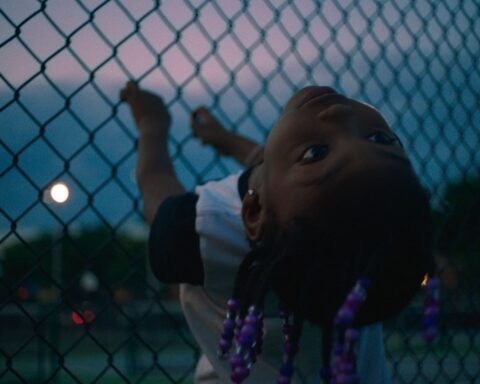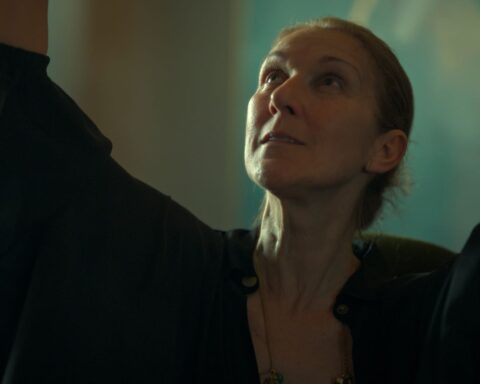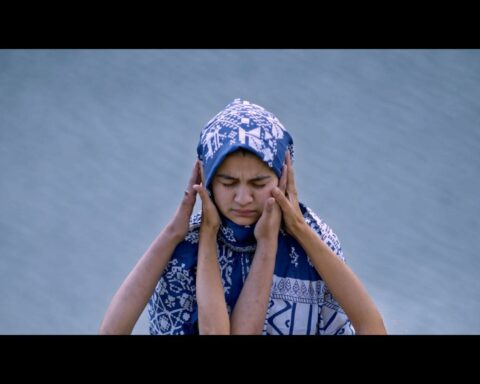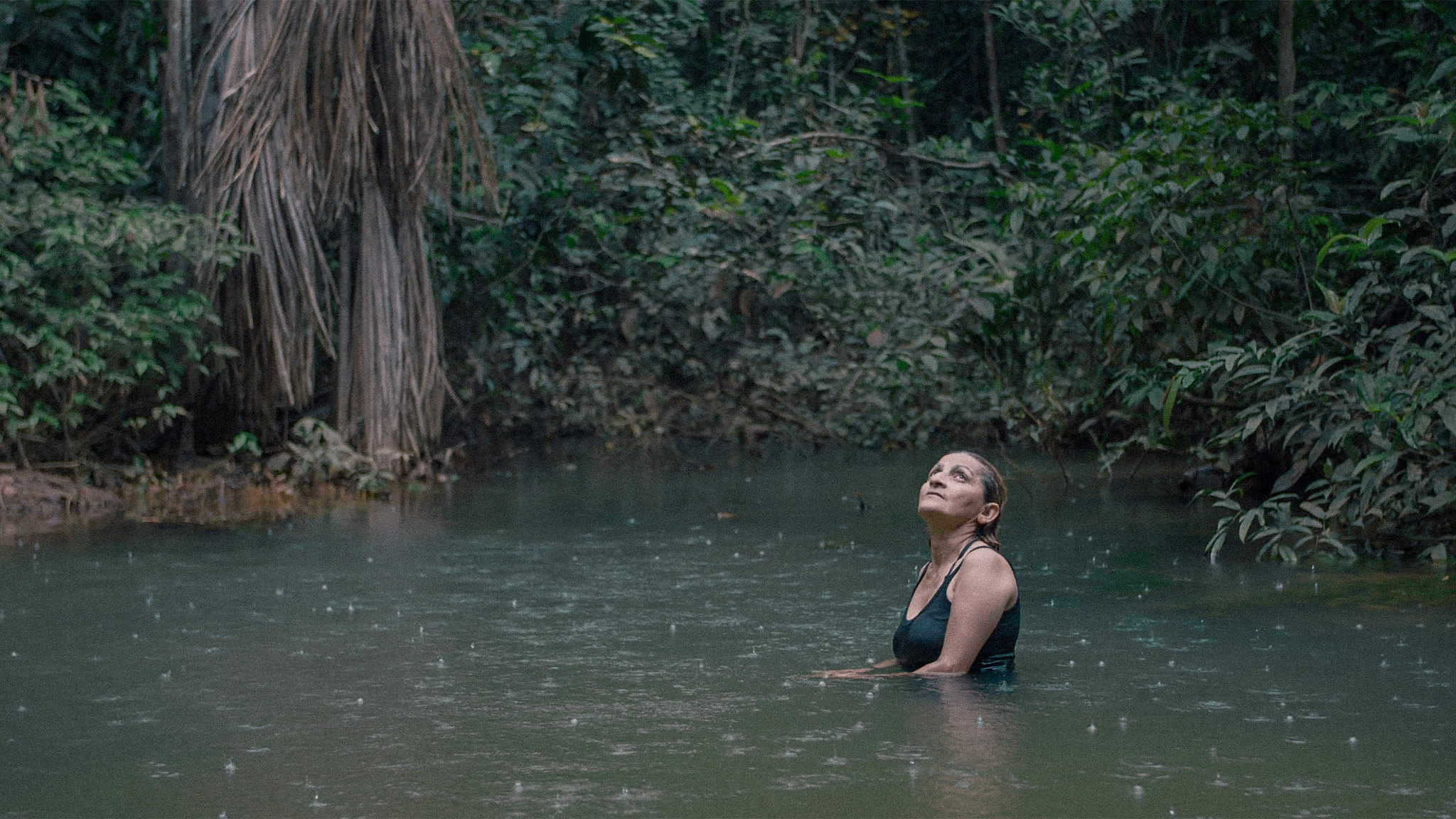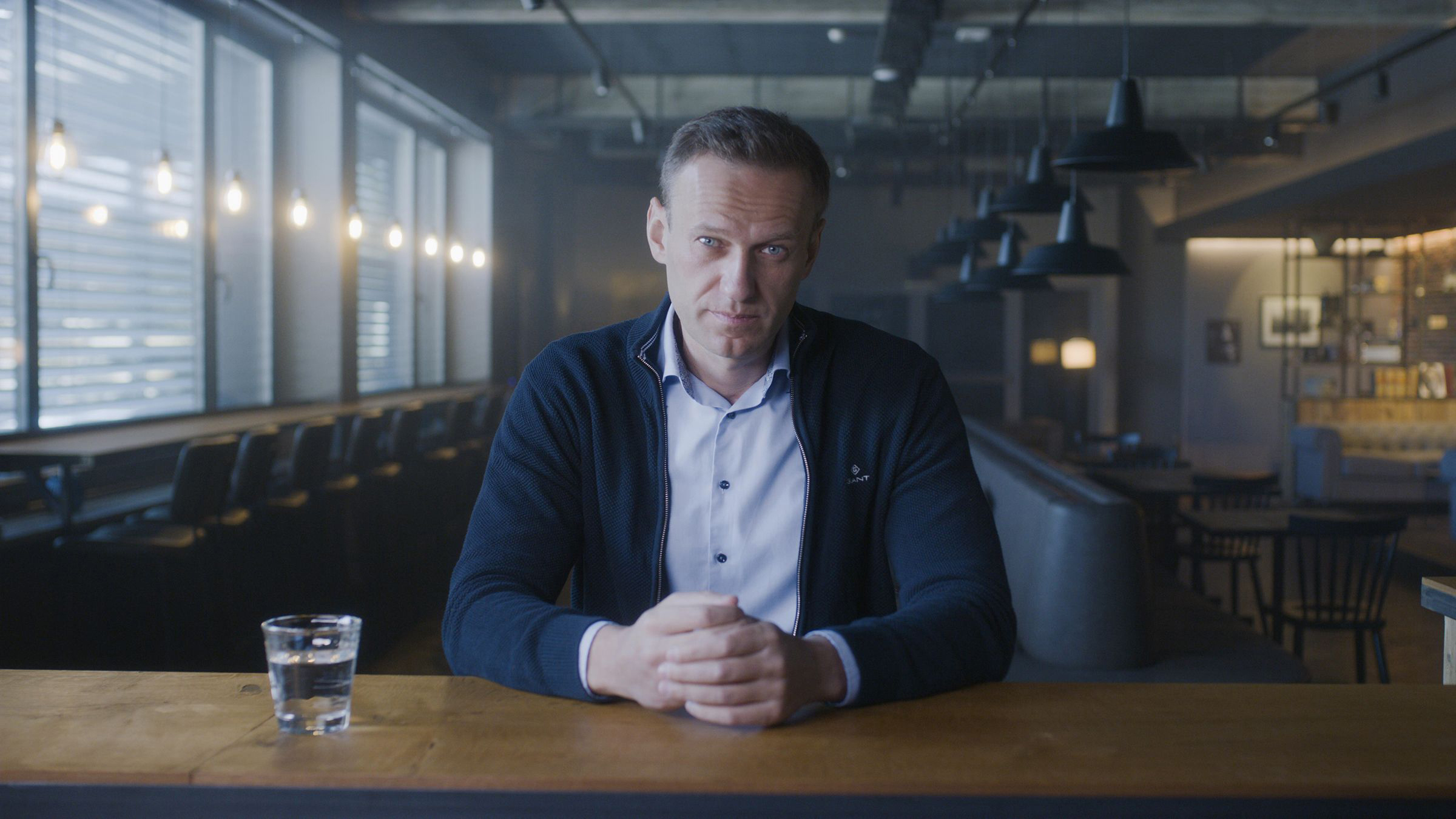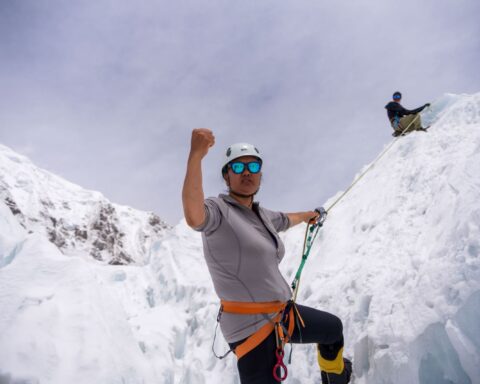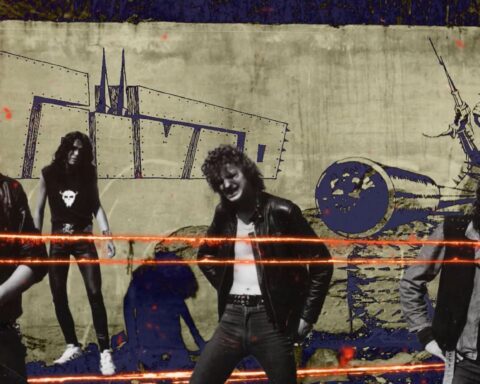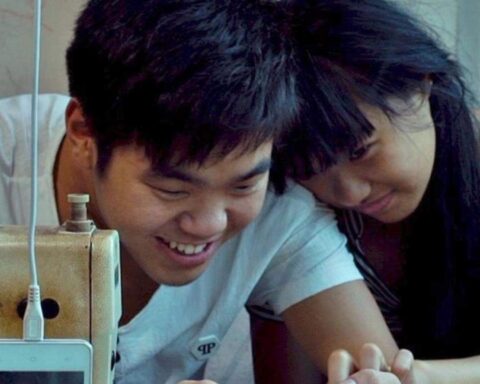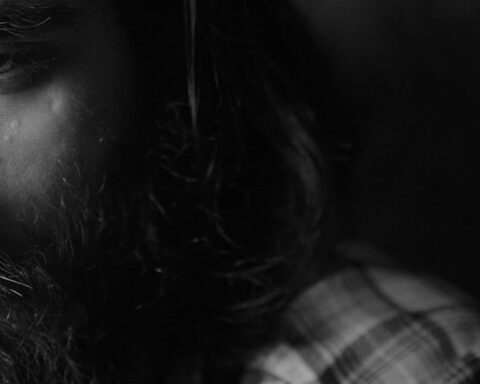While discussing his film I Didn’t See You There over Zoom, director Reid Davenport likens it to a city symphony. It’s an apt description for this evocative feature screening in the U.S. Documentary Competition at Sundance this year. Edited and shot lyrically like the sonorous works that guide audiences through the rhythms of the urban jungle, I Didn’t See You There lets audiences experience the San Francisco Bay Area from Davenport’s perspective as he moves through the streets in his wheelchair.
From Reid’s point of view, the documentary captures the daily factors of accessibility that he faces daily. People park their trucks and block sidewalk easements. Workers leave equipment on ramps. Urban dwellers mingle and chat on the sidewalk, limiting the filmmaker’s ability to pass them by and are not especially concerned to get out of the way. However, when a circus tent pops up mere feet from Davenport’s apartment, the grand shadow it casts invites him to consider the act of looking, of being seen, that disability entails.
As Reid continues to traverse the city, the Big Top offers a beautiful yet disquieting sight. Davenport reflects upon the circus’s role in perpetuating the image of people with disabilities as freaks. While Reid considers this legacy, he encounters micro-aggressions or insensitive acts from people who don’t consider access and mobility as part of their daily realities. The result is a radical film that re-appropriates the gaze and asks audiences to look at the city with a fuller and more inclusive view.
POV spoke with Davenport ahead of the Sundance premiere of I Didn’t See You There.
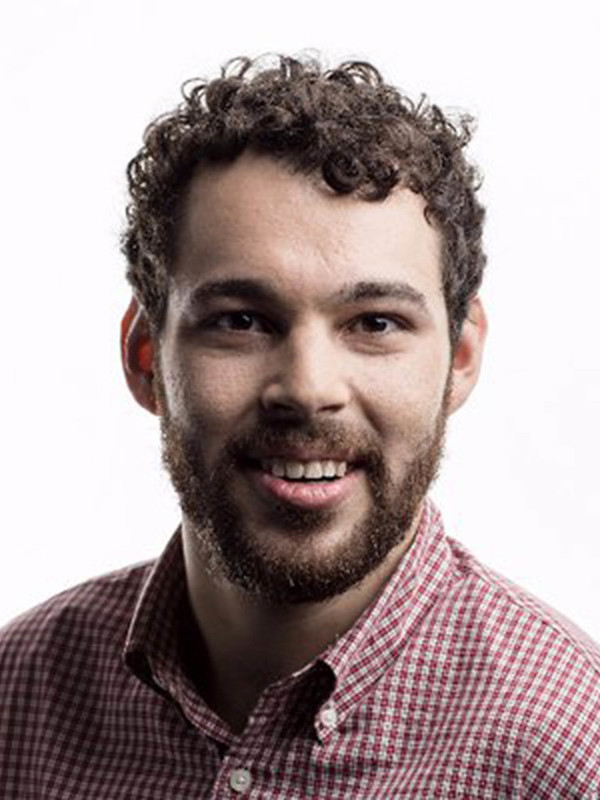
POV: Pat Mullen
RD: Reid Davenport
This interview has been edited for brevity and clarity.
POV: In some of your previous work as a director, you’ve been before the camera and now you’ve positioned the camera so that we’re seeing through you. Why did you want to make this change?
RD: It’s hard to discern why we do anything. Why do we make anything? I think it was my frustration and boredom over not seeing or addressing the ableism that I experienced through my other films. In my other films, I expressively dealt with access, but there was a voyeuristic element to them. There is a certain amount of voyeurism in documentary—I’m guilty of it, it’s a societal phenomenon—so I wanted to change radically how I made my next film.
POV: Can you tell us more about the technology that helped you make this change? How did you develop the apparatus to hold the camera from your perspective?
RD: I used a drone camera called a DJI Osmo and I used it for many reasons. It was steady, it had a gimbal, and it was easy to rubber band to my wheel chair. I could control it from the aperture to the motion of the camera with an app via my phone or via a tablet
POV: When you were looking through the footage again and doing the editing, were there things that made see the world or city life differently?
RD: Film is an approximation of an experience whether I’m shooting myself or shooting my point of view. The radical change is the feeling that you’re getting something different rather than “authentic” change. I also didn’t edit the film. The editor of the film, Todd Chandler, is brilliant and when he came aboard, he made his selects. His selects were very much the same as my selects from the footage. He’s also a musician and he edited the film like a song. There are all these verses with the same melody throughout the film.
POV: It is very lyrical as you’re moving throughout the streets. Were there films that inspired the images you were capturing?
RD: To an extent, Koyaanisqatsi, but News from Home by Chantal Akerman was a big inspiration. So was Cameraperson, and I was shooting this film when Hale County, This Morning This Evening came out. That was a film that I really admired. It was definitely a North Star for me.
POV: I can see the Hale Country comparison, especially in some of the low angles.
RD: The lack of context is also some I really loved.

POV: In terms of context, how far into the production did the circus set up camp in your neighbourhood? What was the story going to be before that happened?
RD: I was honestly just messing around and shooting from my wheelchair, trying to get these weird shots. I didn’t know if it was a film. I thought it could be a social media project or in a museum, and then I started thinking about voiceover. My producer, Keith Wilson, came on and he believed there was a film. That drove me and drove my project. I was shooting for some time with no circus tent up in the background, but then it went up and it was just so beautiful and so bizarre. I didn’t know if it would cinematically make sense, but it was near at home and I kept shooting. There was just something spectacular about it.
POV: We don’t enter the circus in the film—we’re always seeing it some behind the fence. Can you talk about your decision to keep the circus at a remove?
RD: It wasn’t really a circus. It was just a circus tent, but that really didn’t matter to me. They were alluding to the circus, which to me is inextricable from the freak show. I didn’t want to go in because it would’ve been difficult for me to sit there in a circus tent. I very much doubt that anything happening in there was worthy of including in the film. Just the veneer of the circus tent was enough for me.
POV: In the film, you have a conversation with your mother where you mention that you became politicized over the last ten years. What sparked that evolution, and how has it affected your approach to filmmaking?
RD: I think that really came about from ingesting so much material around disability studies and believing the tenet that disability is not an individual medical condition, but rather a politic identity claimed by people who are marginalized as others. That made a lot more sense to me, seeing the inaccessibility that was rampant throughout society and the attitude throughout society. I came to the realization that this is not my caused by me; this was caused by society.
POV: As you’re bringing this film to an online version of Sundance, how has the shift to virtual events worked with conversations around accessibility?
RD: I hope that Zoom and virtual events and hybrid events are not fads so that more people who face accessibility barriers are able to attend. On the flip side of that, Zoom cannot become an end to or an excuse for accessibility. It’s not the same as being there, so it’s a two-sided coin.
POV: One of the films that really caught on at the last in-person Sundance was Crip Camp, which got a lot of attention as a work by and about people with disabilities. What impact did that film have on you?
RD: I was friends with Jim [Lebrecht] before that film came out. I actually did a little assistant editing work on that film. Keith Wilson and I went to Sundance explicitly to see and celebrate Crip Camp. It is a very different film than I Didn’t See You There. It has undeniably opened doors for this film about disability. It was serendipitous that Crip Camp came out a couple years before this film and I am very grateful for Jim and Nicole [Newnham]’s hard work in in telling that story. It’s a piece of history that needed to be told for a while and they told it in such an elegant way. There a lot to say about that film coming out in 2020 and how it was received.
POV: In terms of opening doors, can you tell me more about your work Through My Lens and how a project like I Didn’t See You There fits with the mission?
RD: The goal is to empower disabled people to tell stories through film. I think I Didn’t See You There epitomizes what we’re trying to do. There’s a catharsis in the act of making that that you can’t replicate in any other way. It has allowed me to be so much healthier in an emotional way, in a career way, in a social way. We want other willing disabled people to have that opportunity.
I Didn’t See You There premiered at the 2022 Sundance Film Festival.




![] In a reflection of an unmarked storefront is a grayish silhouette of a man using an electric wheelchair. Behind the man is a spectacular red and yellow circus tent.](https://povmagazine.com/wp-content/uploads/2022/01/I-DIDNT-SEE-YOU-THERE-Lead-Still-e1643143444785.jpeg)
